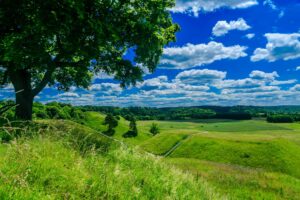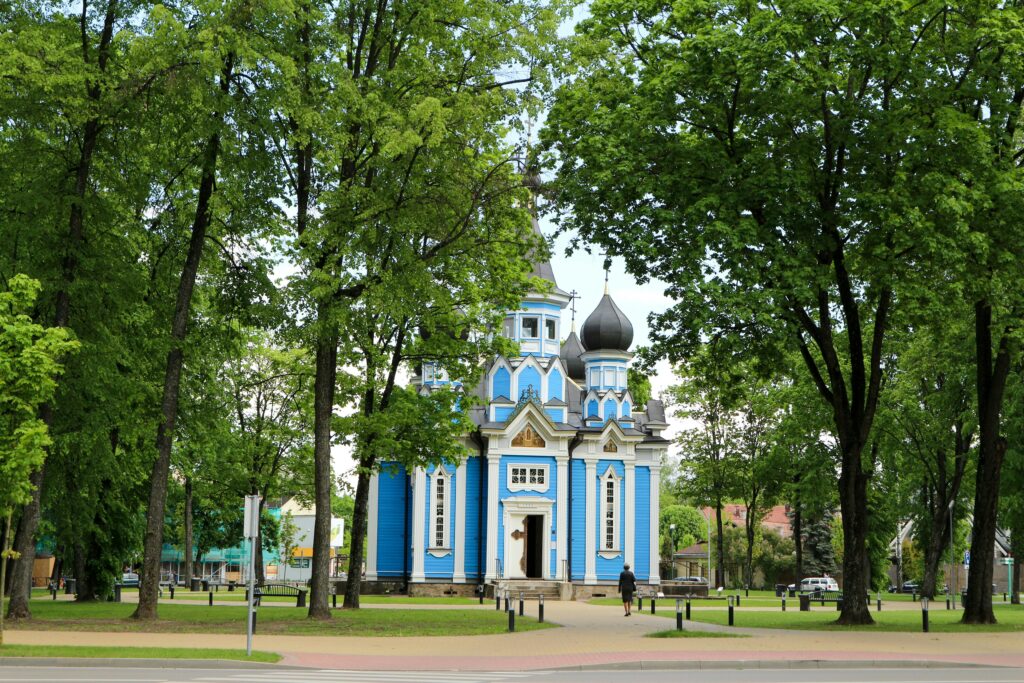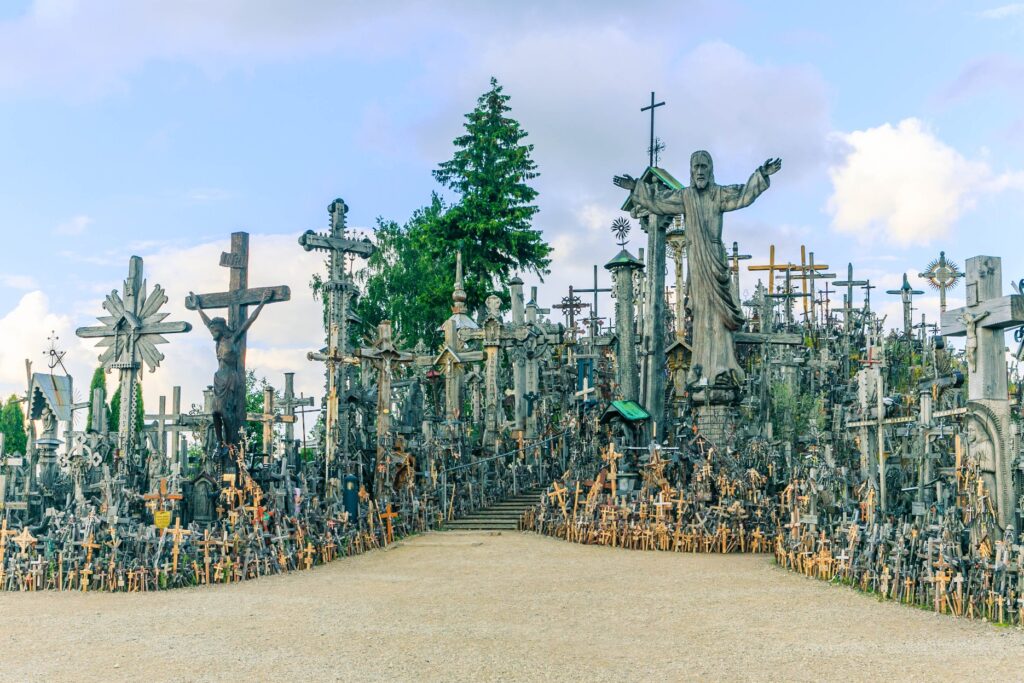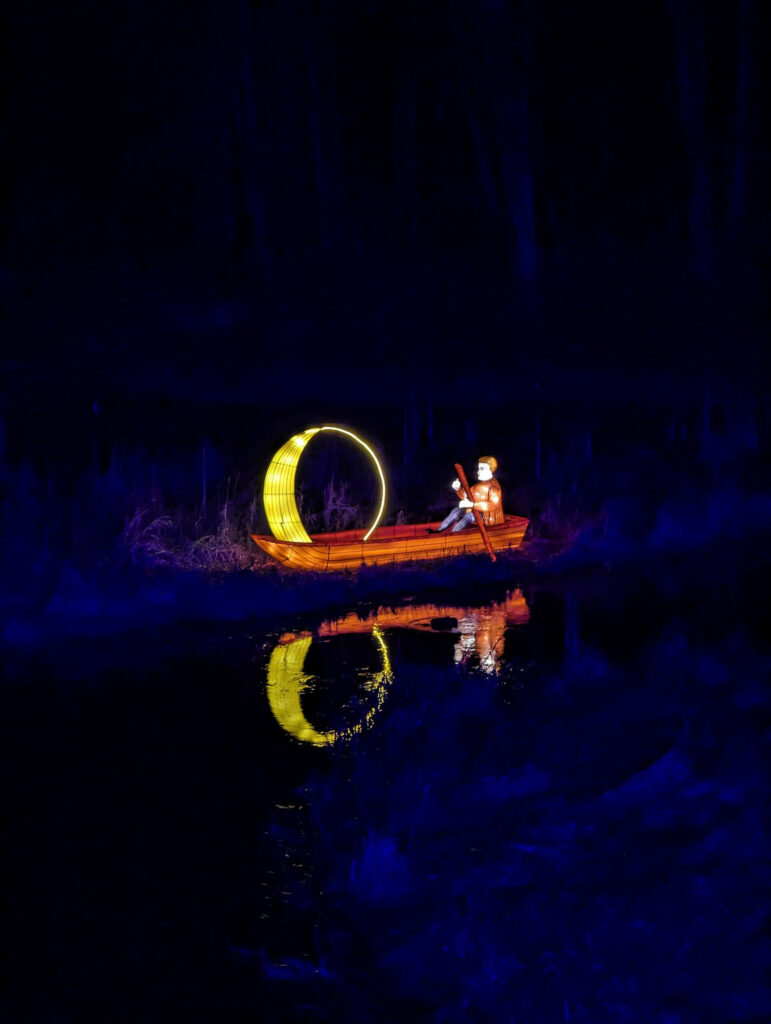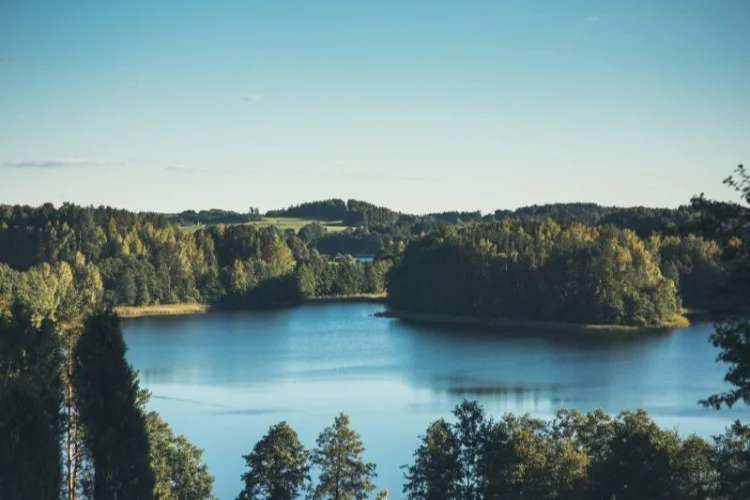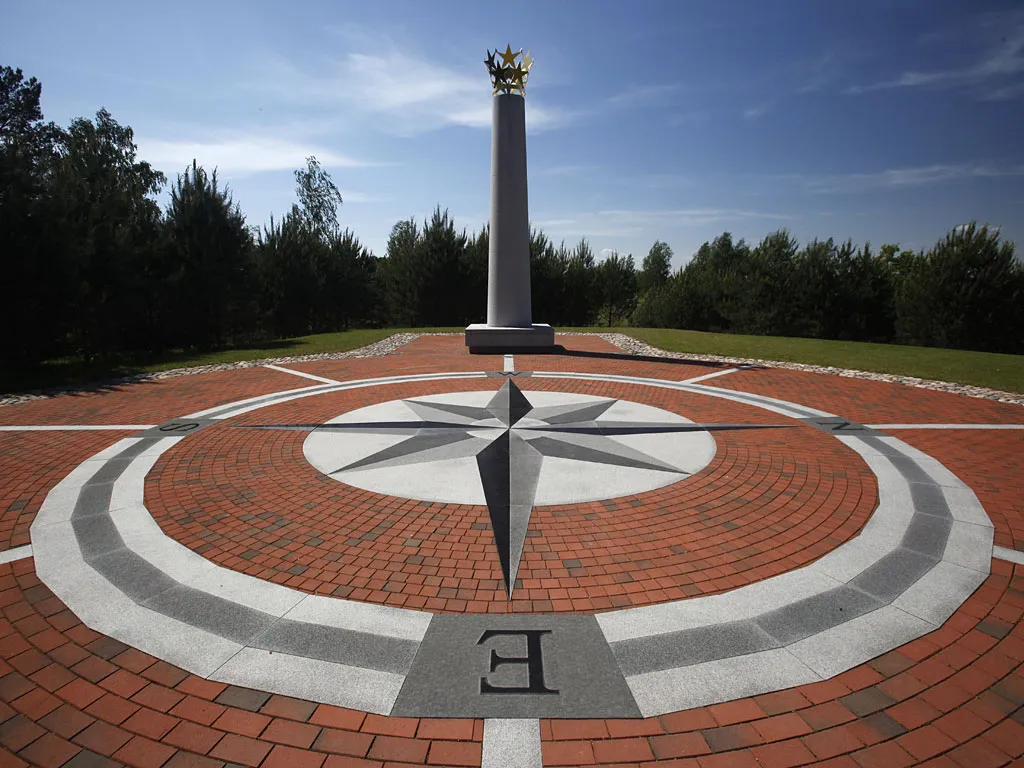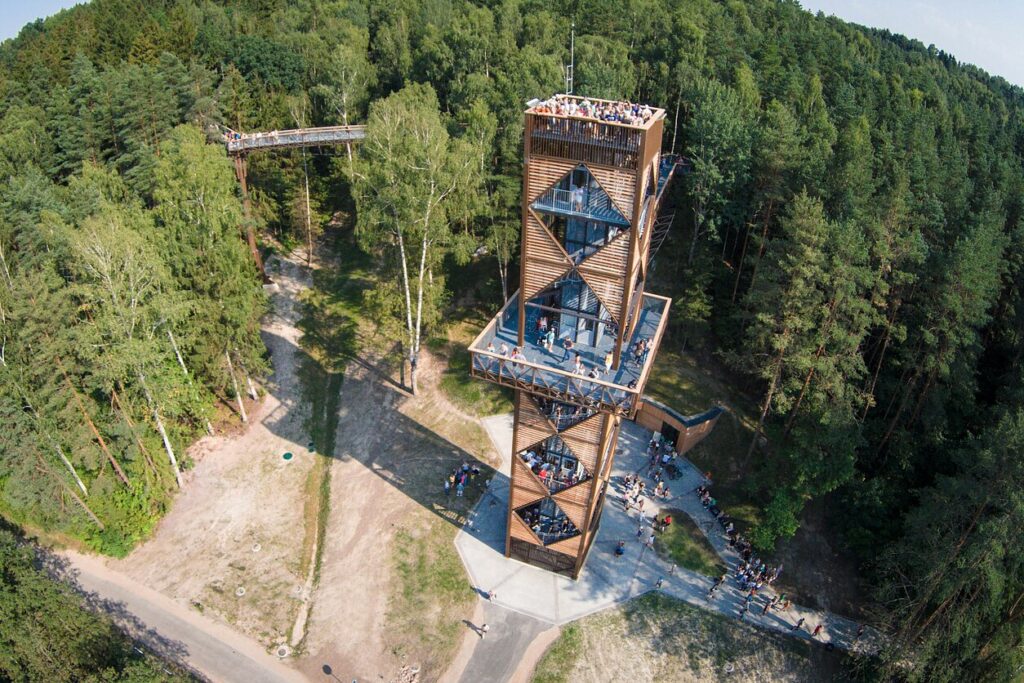Planning to explore more from Vilnius? This guide highlights the best day trips from Vilnius, including visits to majestic medieval castles, historic cities, and scenic national parks. Each destination is easily accessible and offers a unique glimpse into Lithuania’s culture and beauty.
Key Takeaways
- Vilnius is a great starting point for day trips to explore Lithuania’s rich history and stunning landscapes, including Trakai Island Castle and Kaunas.
- Each destination offers unique experiences, from the medieval architecture of Kaunas to the spiritual significance of the Hill of Crosses and the historical insights at Kernavė.
- Outdoor enthusiasts will love the nature trips to Aukštaitija National Park, while culture seekers can enjoy attractions like the Rumsiskes Open Air Museum and Grūtas Park.
Top Day Trips from Vilnius: Explore Lithuania in a Day
Lithuania is a country rich in history and natural beauty, and there’s no better way to explore it than by embarking on a day trip from Vilnius. Among the top recommendations are the picturesque Trakai Island Castle, the Geographical Center of Europe, the historic city of Kaunas, and the spiritual Hill of Crosses.
Each destination offers a unique glimpse into Lithuania’s diverse landscape and cultural heritage.
Book Your Cheap Flights to Vilnius Today!
Don't miss out on the adventure of a lifetime—book your cheap flights to Vilnius now and start exploring Lithuania's rich history and stunning landscapes. Secure your tickets today and embark on an unforgettable journey!
Vilnius, the capital city of Lithuania, is a treasure trove of history, art, and culture. Often overshadowed by more famous European cities, Vilnius stands out with its charming old town, beautiful churches, and vibrant nightlife. The city is located in a picturesque setting where history and modern life blend seamlessly. Visitors can explore its cobblestone streets, discover hidden courtyards, and enjoy the lively atmosphere that characterizes this unique capital.
Beyond the city, Lithuania’s countryside beckons with its rolling hills, serene lakes, and quaint towns. Whether you’re interested in walking through ancient sites, discovering medieval castles, or simply enjoying the natural beauty, the surrounding areas of Vilnius have something to offer.
From the historical Trakai Island Castle to the serene Aukštaitija National Park, each destination provides a distinct experience that enriches your Lithuanian adventure. Tailor your itinerary to include these amazing day trips, and you’ll find yourself immersed in the rich tapestry of Lithuania’s culture and history.
Trakai Island Castle
One of the most popular day trips from Vilnius is to the picturesque Trakai Island Castle. This stunning medieval fortress is surrounded by the serene waters of Lake Galvė, creating a breathtaking vista that captivates every visitor. The castle’s historical significance and peaceful landscapes make it an ideal destination for those looking to immerse themselves in Lithuania’s past while enjoying a tranquil setting. The Trakai National Park, which includes the island castle, is the smallest national park in Lithuania, yet it boasts unique landscapes that are perfect for exploration.
Just a short 30-minute drive from Vilnius, Trakai Island Castle is easily accessible, making it a convenient excursion for those staying in the capital. The castle itself is a marvel of Gothic architecture, with its red brick walls standing proudly against the blue waters of the lake.
Inside, visitors can explore various exhibitions that showcase the castle’s history and the region’s cultural heritage. Whether you’re a history buff or simply love beautiful scenery, a trip to Trakai Island Castle is a must-do.
Karaite Culture and Kibinai
Trakai is also home to the Karaite people, a small ethnic group with a distinctive culture and rich history in Lithuania. The Karaites have left an indelible mark on the town, and their influence can be seen in the architecture, traditions, and cuisine.
One of the highlights of visiting Trakai is tasting kibinai, a traditional Karaite pastry filled with various ingredients like lamb, chicken, or vegetables. These delicious pastries are a testament to the unique Karaite culture that thrives in Trakai and offer visitors a delightful culinary experience.
How to Get There
Getting to Trakai from Vilnius is straightforward and convenient. Frequent buses and trains run between the two locations, providing a comfortable and scenic journey. The travel time is approximately 35-40 minutes, making it an easy and quick escape from the city. Return tickets are affordable, costing around €3-4, ensuring that this day trip fits well within any itinerary.
With its rich history, beautiful scenery, and cultural significance, a day trip to Trakai Island Castle is an unforgettable experience.
Alternatively book a tour to Trakai!
Kaunas – Lithuania’s Second Largest City
Kaunas, Lithuania’s second largest city, is a vibrant hub of history and culture. Known for its rich architectural heritage and lively arts scene, Kaunas offers a plethora of attractions that make it a compelling day trip from Vilnius. The city served as the temporary capital of Lithuania from 1920 to 1939, adding to its historical importance. Key attractions include the medieval Kaunas Castle, the poignant Ninth Fort, and the charming Old Town, each offering a unique glimpse into the city’s past and present.
Traveling to Kaunas from Vilnius is easy and takes about 1 to 1.5 hours by car or train, covering a distance of approximately 100 km. Once there, visitors can explore unique sites like the Paaislis Monastery and enjoy panoramic views from the Aleksotas viewpoint.
Kaunas is not just about history; it also boasts a vibrant arts scene, with numerous galleries and museums showcasing Lithuanian and international art. Whether you’re a history enthusiast or an art lover, Kaunas has something to offer.
Visit Kaunas Castle
Kaunas Castle, constructed in the 14th century, stands as the oldest historical site in Kaunas and a fine example of Lithuanian brick castles. The castle’s tower features exhibitions that narrate its historical significance and evolution over the centuries.
Visitors can also enjoy scenic views from the castle’s observation deck, which is accessible without an entry fee. This medieval fortress is a must-see for anyone visiting Kaunas, offering a fascinating journey through Lithuania’s past.
Ninth Fort
The Ninth Fort is a significant historical site in Lithuania, primarily known for its connection to Holocaust history. This site serves as a memorial for approximately 30,000 Jews who were murdered during World War II. As part of the Kaunas Fortress, the Ninth Fort includes a museum and remnants of fortress walls, providing a somber yet important reminder of the atrocities of the past.
A visit to the Ninth Fort is a poignant and educational experience, shedding light on a dark chapter in history.
How to Get to Kaunas from Vilnius
Getting to Kaunas from Vilnius is straightforward and convenient, making it an ideal day trip destination. Here are the various options for traveling between these two cities:
- By Car: Driving is one of the most flexible and quickest ways to get to Kaunas. The distance between Vilnius and Kaunas is approximately 100 km, and the journey takes about 1 to 1.5 hours via the A1 highway. This option allows you to explore at your own pace and make stops along the way.
- By Bus: Several bus companies operate frequent services between Vilnius and Kaunas. The bus journey takes around 1.5 to 2 hours, depending on traffic and the specific service. Buses are comfortable and offer amenities such as Wi-Fi and air conditioning. Tickets can be purchased online or at the bus station, with prices ranging from €5-10.
- By Train: Trains are another convenient option for traveling between Vilnius and Kaunas. The train ride takes approximately 1.5 hours and offers a scenic view of the Lithuanian countryside. Trains are comfortable and punctual, with several departures throughout the day. Tickets can be bought at the train station or online, with prices similar to those of bus tickets.
- By Shared Ride Services: For a more personalized experience, consider using shared ride services like Bolt or Uber. These services offer door-to-door convenience and can be a cost-effective option if traveling with a group.
Search for a car rental in Vilnius
Kernavė – Lithuania’s First Capital
Kernavė, known as Lithuania’s first capital, is a destination rich in history and archaeological significance. First mentioned in historical records in 1279, Kernavė is recognized as a UNESCO World Heritage Site for its extensive archaeological findings and beautiful landscapes.
Located approximately 35 km from Vilnius, it offers visitors a glimpse into the ancient past with remnants of human settlements spanning over 10,000 years.
Archaeological Site and Museum
The archaeological site of Kernavė is a treasure trove of history, revealing evidence of human settlements from the late Palaeolithic Period to the Middle Ages. The site includes remnants of a unique defense system characterized by five prominent hill forts and significant insights into ancient burial traditions and settlement patterns.
The Kernavė Archaeological site has been a UNESCO World Heritage site since 2004, showcasing a complex ensemble of archaeological properties.
Summer Celebrations
During the summer, Kernavė comes alive with vibrant folk festivals that celebrate its rich cultural heritage and traditions. These celebrations showcase traditional customs and local culture, making it one of the best times to visit this small town.
The festivals add a lively atmosphere to the serene landscapes, offering a unique and immersive experience for visitors.
Druskininkai Wellness Resort
Druskininkai is a historic spa town. It is well-known for its mineral springs and wellness centers. This charming town offers a perfect retreat for those looking to relax and rejuvenate in a serene environment. The mineral springs in Druskininkai are known for their healing properties, including calcium-chloridic-natrium waters with varying levels of mineralization.
With its combination of natural beauty and wellness facilities, Druskininkai is an ideal destination for a day of relaxation.
Grūtas Park
Grūtas Park, located near Druskininkai, is a unique cultural space that showcases Lithuania’s history and the impact of Soviet rule. The park features large monuments and sculptures from the Soviet era that were previously located in public spaces across Lithuania.
An exposition dedicated to Soviet ideology provides visitors with a deeper understanding of this period in Lithuanian soviet history. Grūtas Park is an intriguing destination that combines art, history, and nature.
Cable Car Adventure
A thrilling experience awaits with a ride on the Druskininkai cable car, reaching a height of 45 meters and offering breathtaking views of the Nemunas River and surrounding forests. The journey takes around 10 minutes, providing a scenic and exciting way to explore the area.
This cable car adventure is not only an educational day trip but also a fun way to appreciate the natural beauty of Druskininkai.
Hill of Crosses
The Hill of Crosses is one of Lithuania’s most significant pilgrimage sites, featuring thousands of crosses of various sizes. This site symbolizes the endurance and resilience of the Lithuanian people throughout history. The origins of the Hill of Crosses date back to the aftermath of the 1831 Uprising when families erected crosses for deceased rebels.
Today, it stands as a powerful symbol of faith and resistance, drawing visitors from around the world. When you go take a moment to feel the surreal energy that fills this place. It's truly amazing.
Making a Wish
Many visitors to the Hill of Crosses partake in the tradition of making a wish, believing that these wishes will be granted. This spiritual practice adds a personal and meaningful dimension to the visit, allowing people to connect with the site’s profound significance.
Spending a bit more time here can be a reflective and moving experience, making it a memorable part of your trip.
Book a day trip to the Hill of Crosses from Vilnius:
Rumsiskes Open Air Museum
The Rumsiskes Open Air Museum is a fascinating destination that showcases traditional Lithuanian rural life across various ethnographic regions. Spanning 195 hectares, the museum includes over 90,000 exhibits, with reconstructed farmsteads and workshops set along a 7 km circular path.
During the dark winter months (December and January) Rumsiskes has the paths lit up with all sorts of decorations. It's really a spectacular sight.
This open air museum offers a unique and immersive experience, illustrating the rural lifestyle through centuries and providing insights into Lithuania’s cultural heritage.
How to Get There
Rumsiskes is located approximately 80 km from Vilnius and can be reached by bus or car in about 1 hour. Public transport options include a bus stop approximately 1.5 km from the museum entrance.
Visitors can also enjoy traditional Lithuanian food and drinks at the museum, making it a comprehensive cultural experience. This day trip is easily accessible and offers a deep dive into Lithuania’s rural past.
Aukštaitija National Park
Aukštaitija National Park, located approximately 100 km from Vilnius, is a paradise for nature enthusiasts. This national park is known for its diverse ecosystems, including forests, lakes, and wetlands, making it perfect for activities like hiking, canoeing, and bird watching.
The park also offers the chance to explore traditional Lithuanian villages, providing a glimpse into rural life and cultural heritage. With its stunning landscapes and rich biodiversity, Aukštaitija National Park is an ideal destination for a day trip during the spring to autumn seasons.
Geographical Center of Europe
Just less than 30 km from Vilnius lies the Geographical Center of Europe, a unique destination declared by the French National Institute of Geography. This site offers visitors the chance to stand at a point of continental significance and receive a special certificate marking their visit.
The Geographical Center of Europe is easily accessible and makes for an interesting and educational addition to any itinerary, offering a blend of geographical curiosity and historical context.
Anykščiai – A Nature Lover’s Paradise
Anykščiai is a destination that enchants visitors with its stunning landscapes, rich history, and cultural significance. Known for its natural beauty, Anykščiai offers various attractions, including scenic trails, lush forests, and historical sites. This town is also famous for its local wine, providing a delightful tasting experience for visitors.
Whether you’re wandering through its beautiful countryside or exploring its cultural treasures, Anykščiai is truly a nature lover’s paradise.
Horse Museum
The Horse Museum in Anykščiai offers a unique educational day trip, showcasing the importance of horses in Lithuanian agricultural history.
The museum features:
- Antique carriages
- Shining armors for horses
- Tillage machines
- Blacksmith tools
This provides a comprehensive look into the past.
Visitors can learn about the significance of field and horse works, making it an engaging and informative experience for all ages.
Puntukas Boulder
Puntukas Boulder, the second largest boulder in Lithuania, is a natural wonder with cultural significance. Known for its engraved portraits and legends, Puntukas offers a fascinating glimpse into local folklore and history.
This massive boulder is a must-see for visitors to Anykščiai, combining natural beauty with intriguing stories that add depth to the experience.
Panamune Road and Castles
Those wishing to travel for a full day can find it exciting to see the castle along Panamune Road. The Panamune Highway leads the Nemunas river valley and reaches the Kaunas Klaipinga. On this journey, various castles and estates are accessible according to your available time. Raudondvaris is a red brick manor erected in the 15th and 17th century and is situated near Kaunas. Further down the path is Raudon Castle, a Gothic-style castle with a tower of 33.3 meters tall. Castle Raudone was originally built in the sixteenth century but had extensive repairs in the aftermath of the World War II disasters. The Castle in Panamuni was built in 1604 and is considered a Renaissance masterpiece.
How to Get to Panamune Road and Castles from Vilnius
Getting to Panamune Road and its stunning castles from Vilnius is a straightforward journey. You have several options for reaching this picturesque route:
- By Car: The most convenient way to explore Panamune Road and its castles is by car. The drive from Vilnius to Panamune Road takes approximately 1.5 to 2 hours, covering a distance of around 150 km. Follow the A1 highway towards Kaunas, then take the exit towards Jurbarkas, which will lead you to Panamune Road.
- By Bus: Although less direct, you can take a bus from Vilnius to Kaunas, and then transfer to a local bus heading towards Jurbarkas. The total travel time by bus can range from 3 to 4 hours, depending on connections and waiting times.
- By Train: Another option is to take a train from Vilnius to Kaunas. From Kaunas, you can either rent a car or take a local bus to Jurbarkas, where Panamune Road begins. The train journey to Kaunas takes about 1.5 hours, and additional travel time will be needed to reach Panamune Road.
Once on Panamune Road, you can explore various castles and estates at your own pace, including Raudondvaris Manor, Raudonė Castle, and Panemunė Castle. Each of the
Summary
Exploring the diverse day trips from Vilnius offers a rich tapestry of experiences that highlight Lithuania’s history, culture, and natural beauty. From the medieval charm of Trakai Island Castle to the serene landscapes of Aukštaitija National Park, each destination provides a unique adventure. Whether you’re delving into the archaeological wonders of Kernavė, enjoying the wellness retreats in Druskininkai, or making a wish at the Hill of Crosses, these day trips offer something for everyone. Embark on these journeys to discover the hidden gems of Lithuania, and you’ll return with unforgettable memories and a deeper appreciation for this beautiful country.
Frequently Asked Questions
Trakai Island Castle is about 28 km from Vilnius, and you can reach it in around 35-40 minutes by bus or train.
At the Hill of Crosses, you can explore thousands of unique crosses and take part in the spiritual experience of making a wish, as many believe it holds the power to come true. It's a meaningful visit that connects you to deep traditions and hopes.
To get to Rumsiskes Open Air Museum, you can take a bus or drive from Vilnius, which is about 80 km away and takes around an hour. Just keep in mind that the bus stop is about 1.5 km from the museum entrance.
You can enjoy hiking, canoeing, and bird watching in Aukštaitija National Park, along with exploring charming traditional Lithuanian villages. It's a perfect spot to connect with nature and culture!
Anykščiai is special for its breathtaking landscapes and unique cultural sites, like the Horse Museum and Puntukas Boulder. Plus, you can savor local wine while soaking in the area's rich history!

